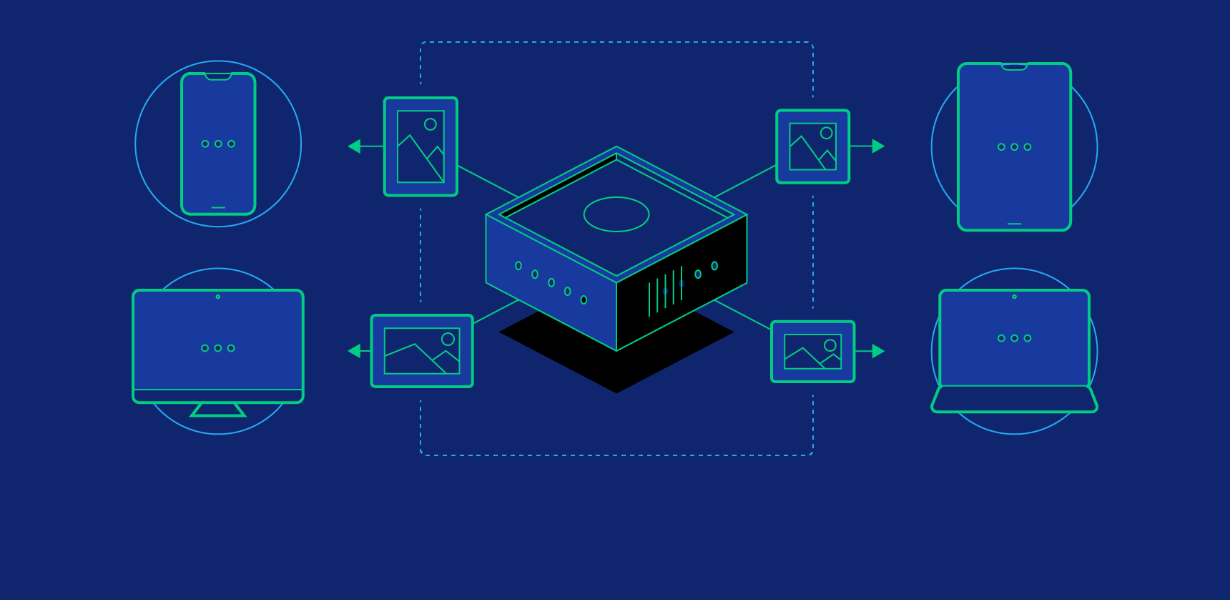
Harnessing the Power of AVIF: The Future of Responsive Images
- Post
- August 7, 2023
- Mobile & Responsive, Responsive Images, Web Design
- 0 Comments
In recent years, the digital landscape has witnessed a rapid evolution, and the demand for visually engaging content has skyrocketed. In this fast-paced digital era, where user experience is paramount, businesses and website owners are continuously seeking innovative ways to improve website performance and enhance user satisfaction. One such innovation that promises to revolutionize the way we handle images on the web is AVIF (AV1 Image File Format). In this comprehensive blog, we delve deep into the world of AVIF and explore how it unlocks the true potential of responsive images, making it the future of web design.
Understanding Responsive Background Images
Responsive web design has become a cornerstone of modern web development. It allows websites to adapt seamlessly to various screen sizes and devices. A crucial element of responsive design is the use of responsive background images. These images serve as the backdrop for web pages and need to scale and adjust proportionally to fit different screen resolutions. With AVIF, designers and developers can now achieve superior image compression without compromising on quality, ensuring faster loading times and a better user experience.
Embracing AVIF in HTML: The Responsive Images Solution
To incorporate AVIF into your web pages, HTML plays a crucial role. HTML provides the necessary attributes and elements to implement responsive images effectively. By utilizing the “picture” and “source” elements along with the “img” element, developers can cater to various devices and resolutions seamlessly. This approach ensures that users receive images optimized for their specific viewport, improving overall page performance and reducing bandwidth consumption.
AVIF vs. Other Image Formats: Unleashing Unmatched Quality
One of the key factors that sets AVIF apart from other image formats is its ability to deliver exceptional image quality with smaller file sizes. Comparing AVIF to JPEG or WebP, AVIF consistently outperforms both in terms of image fidelity and compression efficiency. This advancement makes AVIF a compelling choice for modern web designers and developers looking to strike the perfect balance between visual appeal and optimal performance.
AVIF’s Impact on Website Performance
Website speed and performance are critical factors for both user experience and search engine rankings. Slow-loading websites can lead to higher bounce rates and decreased conversions. AVIF’s lightweight nature significantly reduces image file sizes, resulting in faster page loading times. This enhanced performance not only improves user satisfaction but also signals search engines like Google that your website is responsive and user-friendly, positively impacting your search rankings.
AVIF Browser Support: Navigating the Compatibility Landscape
While AVIF undoubtedly offers significant advantages, it is essential to consider browser support before fully embracing this image format. As of now, AVIF is natively supported in major web browsers like Chrome and Firefox. However, to ensure a seamless experience for all users, it is essential to include fallback options for browsers that do not support AVIF yet. This way, you can harness the benefits of AVIF while still catering to a wider audience.
Implementing AVIF: Step-by-Step Guide
To effectively implement AVIF in your web development projects, follow these steps:
Check Browser Support: As mentioned earlier, verify the browser support for AVIF before diving in.
Conversion Tools: Convert your images to AVIF format using specialized tools or plugins.
HTML Markup: Use the “picture” and “source” elements in your HTML code to provide multiple versions of images based on screen resolutions.
Optimization: Optimize your AVIF images for the web to strike the perfect balance between quality and size.
Testing: Thoroughly test your website across various devices and browsers to ensure seamless functionality.
AVIF and SEO: Enhancing Your Search Visibility
Search engine optimization (SEO) is crucial for any website aiming to rank higher in search engine results. With AVIF’s positive impact on website performance, its implementation can indirectly contribute to improved SEO rankings. By providing a faster, more enjoyable user experience, AVIF can decrease bounce rates, increase session durations, and boost user engagement, all of which are important signals that search engines consider when ranking websites.
Future Prospects: AVIF Pioneering the Way
The future of AVIF looks promising. As web technology continues to advance, we can expect broader browser support and better integration of AVIF into content management systems and web development frameworks. The ongoing efforts of browser developers and web standards organizations to adopt AVIF as a standard image format will undoubtedly pave the way for a more image-rich and user-friendly web.
Final Words
In conclusion, AVIF is the future of responsive images, offering unparalleled image quality and compression efficiency. Embracing AVIF in your web development projects can significantly improve your website’s performance, user experience, and search engine rankings. As browser support continues to expand and AVIF becomes more widely adopted, its impact on the web design landscape will be nothing short of revolutionary. Stay ahead of the curve and harness the power of AVIF to elevate your web design to new heights.
Commonly Asked Questions
Q1: Is AVIF compatible with all web browsers?
A1: While AVIF is natively supported in major web browsers like Chrome and Firefox, it is essential to provide fallback options for browsers that do not support AVIF yet. This ensures a seamless experience for all users.
Q2: Can AVIF images be optimized for the web?
A2: Yes, AVIF images can be optimized for the web to strike the perfect balance between image quality and file size. Optimizing AVIF images ensures faster loading times and better overall website performance.
Q3: Does AVIF impact SEO rankings?
A3: Indirectly, yes. AVIF’s positive impact on website performance, user experience, and engagement can contribute to improved SEO rankings by reducing bounce rates and increasing session durations.
Q4: Are there any conversion tools for AVIF images?
A4: Yes, there are various conversion tools and plugins available that can help convert images to AVIF format efficiently.
Q5: What does the future hold for AVIF?
A5: The future of AVIF looks promising, with potential broader browser support and better integration into web development frameworks. Efforts by browser developers and web standards organizations will drive its adoption as a standard image format.



